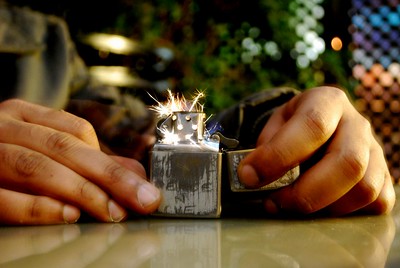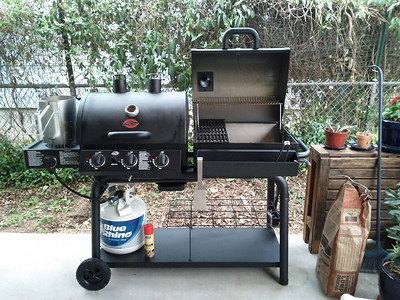
When it comes to lighting up, the choice of lighter is just as important as the choice of fuel that goes into it. Many folks are loyal to their reliable and classic lighters, renowned for their longevity and dependability. However, a common query arises regarding these trusty lighters: can you use butane in a Zippo?
The answer to this question isn’t as simple as one might think and depends on understanding the difference between various fuel types and how they interact with the design of different lighters. This article aims to delve into the specifics of why certain fuels are recommended for certain lighters, with a particular focus on this brand and the use of butane.
In the following sections, we will discuss the unique characteristics of these lighters, the properties of butane as a fuel source, and the potential consequences of using butane in this lighter. The potential risks and alternatives will also be explored, providing you with a comprehensive understanding of the topic at hand. By the end, you should have a clear understanding of why specific fuels are recommended for different types of lighters and the potential implications of straying from these recommendations.
To Answer That Question First
No, you should not use butane in this brand. These lighters are designed for liquid fuel, specifically, fluid use in this lighter which is a type of naphtha. Using butane in a Zippo could damage the lighter and potentially be a safety hazard due to the difference in pressure and burning properties between butane and naphtha. However, the brand does manufacture a separate line of butane lighters for those preferring to use butane as a fuel source.
The Reason Why Butane Can’t Be Used
The lighter was first produced in the early 1930s, are recognized for their unique design. They use a refillable fuel tank, a wick, and a striker wheel for ignition. Traditional lighters are specifically designed to use liquid fuel. The standard fuel for this brand is the Zippo-brand lighter fluid, which is a form of naphtha, a flammable liquid hydrocarbon mixture.
The design and build of the lighter are unsuitable for butane for several reasons. First, the fuel tank is built to absorb and hold liquid fuel, not pressurized gas like butane. Second, the wick system is designed for capillary action to draw up the liquid fuel, which wouldn’t work efficiently with gas fuel.
Read this related article: Are Butane Lighters Allowed on Airplanes?
Consequences of using butane in a Zippo lighter
Using butane in this lighter could lead to several problems. Given the difference in pressure and burning properties between butane and naphtha, you could damage the internal structure of the lighter, rendering it inoperable. The wick might not be able to properly absorb the butane, leading to inefficient lighting or failure to light at all.
Moreover, there’s a safety risk involved. If butane is inserted into it, it could potentially cause the lighter to explode due to the increased pressure, which can be dangerous for the user.
Expert opinions and references backing up the argument
Various lighter and fuel experts, including those from Zippo itself, strongly advise against using butane in a Zippo lighter designed for liquid fuel. According to their official website and various enthusiast groups, using butane in this lighter is a misuse of the product that voids the warranty and can lead to damage or injury. Instead, users are advised to stick to recommended fuel, or if a butane source is preferred, to opt for a butane lighter specifically designed for that purpose.
Potential Damage and Risks
Using butane in a Zippo lighter that’s designed for liquid fuel can result in a variety of damages to the lighter. The most immediate issue is that butane, a gas at room temperature, could leak from the lighter, making it inefficient or even unusable.
In a worst-case scenario, the pressure from the butane gas could cause physical damage to the internal structure of the lighter. The fuel chamber is not designed to handle the pressure from butane gas, which could lead to deformations or cracks, resulting in permanent damage.
Another concern is that the wick, designed for capillary action with liquid fuel, could dry out or become clogged due to the incompatible butane. Over time, this could reduce the efficiency of the lighter, preventing it from lighting or causing it to produce an uneven flame.
Possible safety risks associated with using butane in a Zippo lighter
From a safety perspective, using butane in this lighter could be quite dangerous. Because the fuel tank is not designed to withstand the pressure of butane, the lighter could potentially explode when attempting to ignite it, causing injury.
Moreover, if the butane were to leak from the lighter, it could create a fire hazard, particularly in enclosed spaces or near open flames or heat sources. Given that butane is heavier than air, it can accumulate in low areas and create an invisible fire risk.
Thus, the use of butane in this lighter not only poses a risk of damaging the lighter but also a significant safety hazard for the user and the surroundings.
Alternatives to Using Butane in Brand of Lighter
The appropriate fuel is Zippo-brand lighter fluid, which is a form of naphtha. It is specially designed to work seamlessly with the wick and fuel chamber system of the lighter.
Using the recommended fuel ensures a steady, reliable flame and extends the lifespan of your lighter. The lighter fluid also has a low odor, making it less obtrusive to use than some other fuel types.
Apart from the official Zippo-brand lighter fluid, other types of naphtha are also suitable. However, users should be cautious to use clean, high-quality fuel to avoid clogging or corroding the wick and to ensure efficient combustion.
Presenting the Zippo Butane Lighter as an alternative
For those who prefer using butane as a fuel source, The brand has an alternative option: the Zippo Butane Lighter. This range of lighters is specifically designed to be filled with butane gas, providing the reliability of the brand with the convenience of butane fuel.
Zippo butane lighters are equipped with a refillable butane tank and usually feature a piezo ignition system, eliminating the need for a flint wheel. They offer a consistent, windproof flame and the classic design aesthetic associated with these lighters.
By choosing a Zippo Butane Lighter, you can enjoy the benefits of butane fuel without risking the damages or safety hazards associated with using butane in a traditional lighter. It’s the best of both worlds, giving you the flexibility to choose the fuel type you prefer while still enjoying the quality and reliability of the brand.
How to Refuel the Lighter Properly
Detailed Steps on How to Refuel a Traditional Zippo Lighter with the Appropriate Fuel
- Open the lighter: Lift the metal cover of the lighter to reveal the chimney and wick.
- Remove the insert: Hold the metal casing in one hand, grab the lighter insert with your other hand, and gently pull it free.
- Turn the insert upside down: You’ll see a felt pad on the bottom. Lift this felt pad to reveal the cotton packing inside.
- Saturate the cotton packing: Using your Zippo lighter fluid, start to wet the cotton packing. Do this slowly and give the fluid time to be absorbed.
- Fill until saturated: Continue this process until the cotton is fully saturated but not dripping.
- Replace the felt pad: Once the cotton is saturated, replace the felt pad and slide the insert back into the metal casing.
- Let the lighter sit for a few minutes: This allows the lighter fluid to soak into the wick.
- Test the lighter: Before closing the lighter, strike the flint wheel to make sure it lights up.
Tips and Precautions to be Taken While Refueling
- Always refuel your lighter over a sink or outside. This ensures any spills won’t pose a fire risk.
- If you accidentally overfill the lighter, let the excess fluid evaporate fully before attempting to light the lighter.
- Make sure your hands are free from any lighter fluid before lighting the lighter, as the fluid is highly flammable.
- Always close your lighter fluid can immediately after use to prevent the fluid from evaporating or posing a fire risk.
- Never use a fuel other than Zippo lighter fluid or another form of naphtha in a traditional lighter. As we’ve discussed, using butane or other non-recommended fuels can damage the lighter and pose safety risks.
Following these steps and precautions will ensure that you refuel your lighter properly and safely, keeping it in good working condition for many years to come.
To Make a Conclusion
Using butane in a traditional Zippo lighter is not recommended due to the design of these iconic lighters and the potential damage and safety risks that could arise. These lighters are crafted to function optimally with liquid fuel, specifically this brand of lighter fluid, which is a form of naphtha. Attempting to use butane could not only damage the lighter’s functionality but also pose serious safety hazards.
However, this does not mean that fans of butane are left in the dark. They cater to the preferences of its vast user base by offering a separate line of butane lighters. These lighters provide the dependability of the brand and are specifically designed for butane use, making them a safe and reliable choice.
Understanding the correct way to refuel your lighter is crucial, both for maintaining the longevity of the device and ensuring its safe use. By sticking to the recommended fuels and following the appropriate refueling steps, users can enjoy the reliability and performance that these lighters have been known for over the years. As always, user safety should be the top priority when handling flammable substances.
In the end, whether you’re a fan of traditional Zippo lighters or prefer the convenience of butane, this brand offers reliable and safe options for all its customers.

Mike is an experienced propane technician with over 15 years of professional experience in the field. He has dedicated his career to helping customers with their propane needs, from installation to maintenance and repair. Together with Jeremy, he co-founded this website to provide useful information and guidance to customers seeking reliable propane services.




